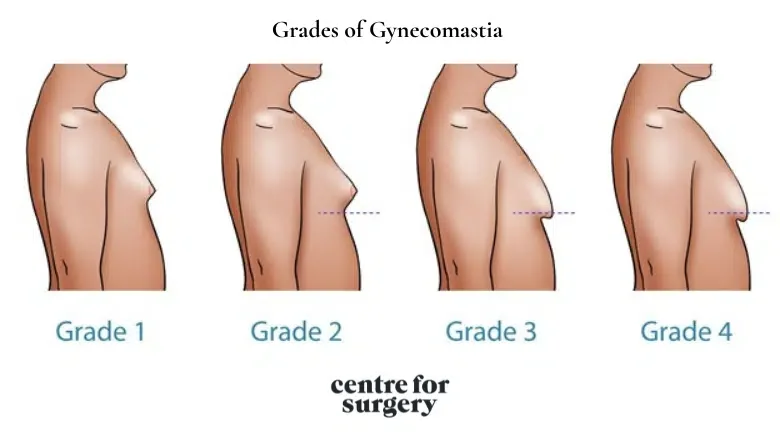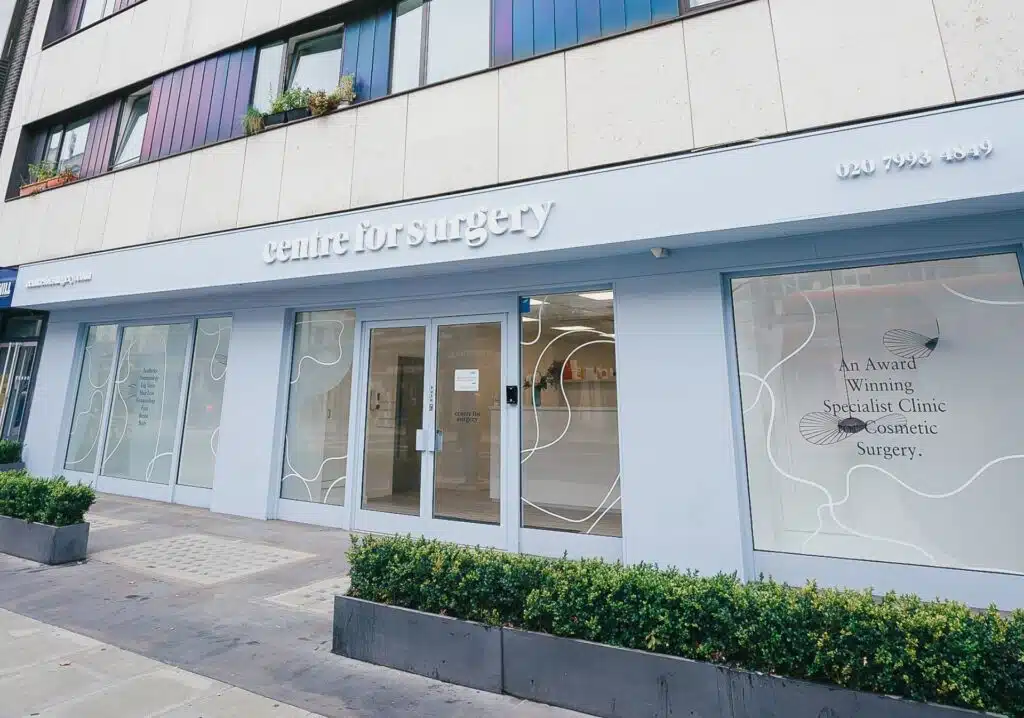Are you noticing that your chest appears larger than usual, or are you feeling self-conscious about a chest that seems more developed than you expected? If so, you might be dealing with a condition called gynecomastia. This is a common issue that affects millions of men worldwide, leading to the development of breast tissue that can resemble a more feminine chest. Gynecomastia can vary in severity, and doctors typically classify it into four different grades, each with its own specific characteristics and treatment approaches. Understanding the severity of your condition is crucial in determining the most appropriate course of action. In the following sections, we will explore the four grades of gynecomastia in detail, discuss the symptoms and signs associated with each grade, and outline the various treatment options available to help manage and resolve the condition.
What is Gynecomastia?
Gynecomastia is a condition that can affect men at any stage of life, from adolescence to older age. It involves the presence of firm, dense breast tissue mixed with fat, creating an enlarged chest appearance that can be difficult to reduce through diet and exercise alone. This firm tissue is resistant to traditional weight loss methods, making it challenging for those affected to achieve the chest contour they desire. The abnormal growth of breast tissue can alter the natural shape of the chest, leading to changes in appearance that many find undesirable. In more severe cases, the excess tissue may become significant enough to cause sagging skin, further contributing to the altered chest contour.
The 4 Gynecomastia Grades
Grade One: Mild Gynecomastia Without Sagging
In the mildest cases of gynecomastia, the chest retains a relatively normal appearance with no noticeable excess skin. Although some medical professionals attempt to measure the amount of gynecomastia in grams, this is often challenging to do accurately before surgery. For this reason, most plastic surgeons define Grade One gynecomastia as a slight or mild enlargement of the breast glands, where there is no sagging or excess skin involved. The chest may appear subtly fuller, but the changes are minimal and generally not immediately noticeable.
Grade Two: Moderate Gynecomastia With or Without Mild Sagging
As gynecomastia progresses, it can develop into what is classified as Grade Two, where the enlargement of the breast tissue becomes more apparent. Patients with this grade have a more noticeable amount of breast tissue than those with Grade One, yet there is still little to no sagging of the skin. Some surgeons may further subdivide this grade into 2a and 2b, where 2b indicates a minor excess of skin. Despite these subdivisions, Grade Two is generally characterised by a moderate degree of breast tissue growth that might start to affect the chest’s contour but still lacks significant sagging.
Grade Three: Severe Gynecomastia With Mild Sagging
Grade Three gynecomastia is where the condition becomes more severe, with a substantial increase in breast tissue that begins to cause mild sagging. Typically, at this stage, the chest may contain more than 500 grams of combined fat and glandular tissue, leading to a more pronounced change in the chest’s appearance. Although the sagging is not extreme, the heaviness of the breast tissue starts to pull the skin downward, resulting in a noticeable droop that alters the overall contour of the chest.
Grade Four: Severe Gynecomastia With Significant Sagging
In the most advanced stage, Grade Four gynecomastia, the condition is severe, with a significant amount of breast tissue and pronounced sagging of the skin. The chest may resemble that of a woman with large, sagging breasts as the skin stretches and the areolas often enlarge and begin to point downward. At this stage, the effects of gynecomastia are quite dramatic, with the chest taking on a distinctly feminine appearance due to the extensive growth of breast tissue and the accompanying sagging. This grade represents the most severe manifestation of gynecomastia, requiring comprehensive surgical intervention to restore a more typical male chest contour.
RELATED: Gynecomastia Surgery FAQs – Q&A about Male Breast Reduction
Is Gynecomastia Permanent?
One of the most common concerns among those dealing with gynecomastia is whether the condition is permanent. The answer, however, is not entirely straightforward and can vary depending on several factors. To understand this better, let’s think of gynecomastia like a stubborn stain on a favourite shirt—it might gradually fade away on its own, or it could require targeted treatment to remove completely. In either case, you’re not necessarily resigned to living with it forever.
RELATED: Does Gynecomastia Go Away?
In many instances, especially when gynecomastia occurs during puberty, the condition can resolve on its own as hormone levels balance out over time. This natural resolution can take months or even a few years, but for many young men, the breast tissue shrinks and the chest returns to its typical shape without any intervention. However, when gynecomastia persists into adulthood or develops later in life, it may be more resistant to natural resolution.
Adult gynecomastia, which can be caused by factors such as hormonal imbalances, certain medications, or underlying health conditions, is less likely to disappear without treatment. In these cases, the condition may persist unless specific measures are taken to address it. This could include lifestyle changes, adjusting medications, or, in more severe cases, surgical intervention to remove the excess breast tissue and restore a more masculine chest contour.
FAQs
How Common is Gynecomastia?
Gynecomastia is actually quite common. Research indicates that up to 80 percent of men in the UK will experience this condition at some point in their lives. The severity can vary widely, from cases that are barely noticeable to those where the breast tissue is more pronounced, leading to sagging and a feminine chest appearance. No matter your age or body type, gynecomastia surgery can be a helpful solution if you’re dealing with this condition.
What Does Gynecomastia Feel Like?
Gynecomastia often feels like firm, spongy, or lumpy tissue located beneath the areola. The sensation can vary depending on the severity of the condition. Beyond the physical feeling, gynecomastia can also significantly impact a man’s confidence, as the altered chest appearance may lead to feelings of self-consciousness or dissatisfaction with one’s body.
How Can I Tell If I Have Gynecomastia?
Gynecomastia often begins with the development of firm or fatty tissue in the breast area, which can give the chest a more feminine look, especially around the breast or areola. As the condition advances, you might start to see sagging, and your chest contours may begin to resemble those of a woman’s breast. If you’re unhappy with how your chest looks or feels, it’s important to consult a plastic surgeon who specialises in gynecomastia. They can assess your condition and discuss the best treatment options for you.
Can I Prevent Gynecomastia?
In many cases, gynecomastia cannot be prevented, as it can be linked to genetics. However, it’s crucial to avoid certain triggers that can lead to the development or recurrence of gynecomastia, even after surgery. Being mindful of these factors can help manage or prevent the condition from returning.
How Can I Get Rid of My Gynecomastia?
The most effective way to eliminate gynecomastia is through surgery. This typically involves a combination of liposuction and the surgical removal of the dense breast and fatty tissue. Gynecomastia can be particularly frustrating because, for many men, it begins during puberty and persists for years despite efforts to reduce it through exercise and diet. Unfortunately, even with a dedicated fitness routine and healthy eating, gynecomastia often remains unchanged, making surgery a necessary step for those seeking a lasting solution.
RELATED: How To Get Rid Of Gynecomastia
Why Choose Centre for Surgery for Gynecomastia Surgery?
At Centre for Surgery, we are committed to providing top-tier care for men seeking gynecomastia surgery. Our clinic, located in the heart of London, is renowned for its expertise in plastic and cosmetic surgery, with a particular focus on male breast reduction procedures.
Our highly experienced team of surgeons who specialise in gynecomastia surgery sets us apart. Our surgeons have successfully performed numerous gynecomastia surgeries, earning a reputation for delivering outstanding results that restore confidence and improve the quality of life for our patients. We understand that every case is unique, which is why we offer personalised treatment plans tailored to each individual’s needs.
Our state-of-the-art facilities ensure that you receive the highest standard of care in a comfortable and safe environment. We use the latest surgical techniques and technologies to minimise recovery time and enhance the overall experience for our patients. At Centre for Surgery, patient safety and satisfaction are our top priorities.
In addition to our surgical expertise, we provide comprehensive support throughout your journey, from the initial consultation through to your recovery. Our dedicated team is always available to answer any questions you may have and to ensure that you feel informed and confident every step of the way.
Choosing Centre for Surgery means choosing a clinic that is not only highly skilled but also deeply committed to achieving the best possible outcome for you. We take pride in helping our patients achieve a more masculine chest contour and, most importantly, regain their confidence.
















